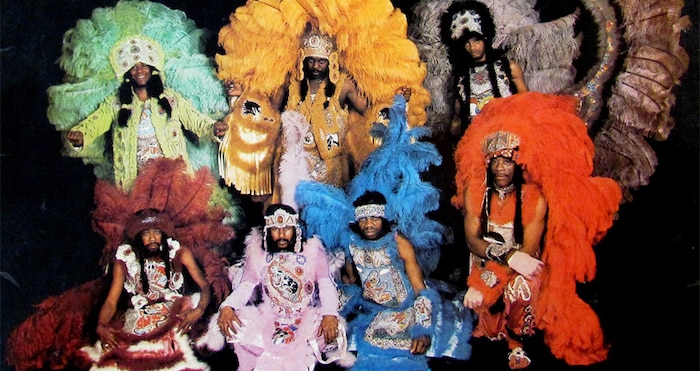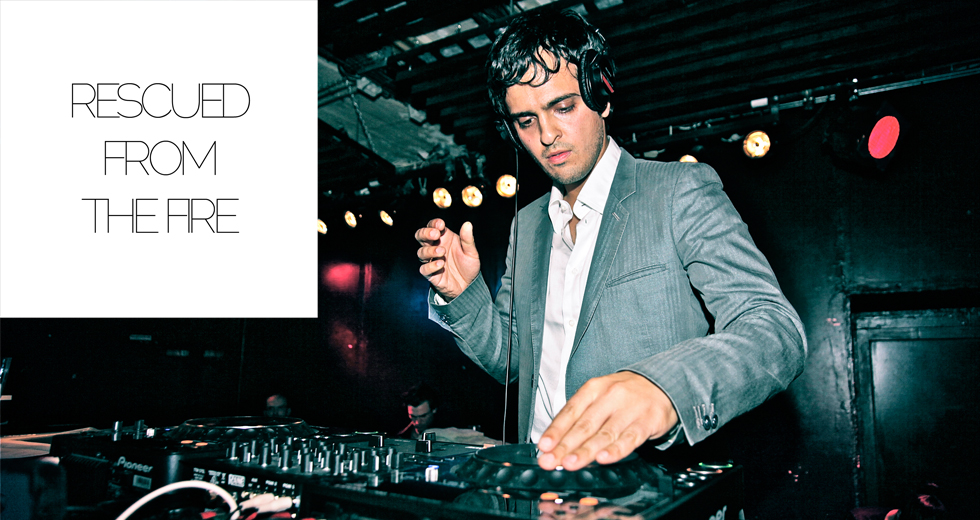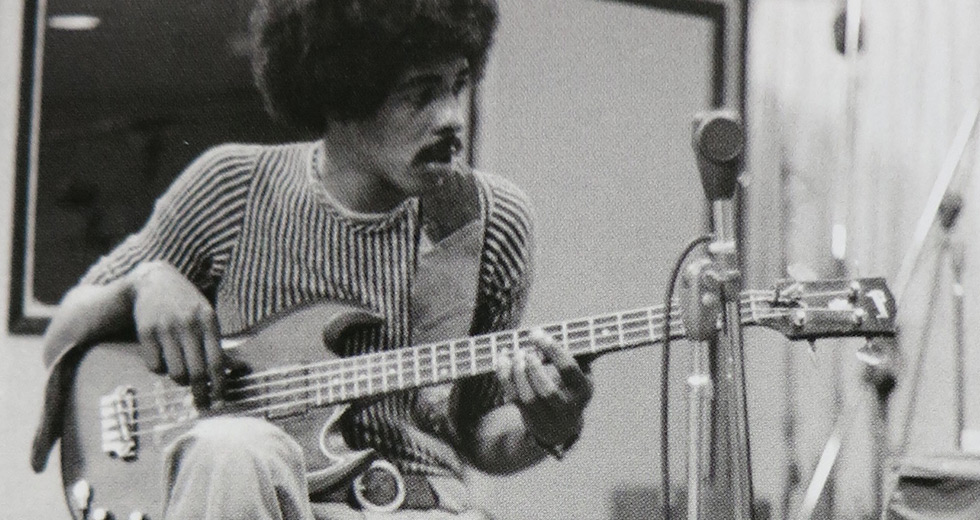A Tribute to Big Chief Bo Dollis
One of New Orleans’ most important cultural figures died earlier this year. Garth Cartwright pays tribute to the legacy of the Big Chief from The Wild Magnolias.

On January 31st, 2015 a major funeral took place in New Orleans. The city’s Mayor spoke. Celebrated musicians were there. Hundreds turned up to bear witness, including TV stations and newspapers that covered the funeral extensively. And amongst the mourners were dozens of men dressed in outrageous costumes that resembled something between mid-’70s Funkadedlic get-up, Lakota Indian ceremonial costumes and characters from Where The Wild Things Are. The man they were paying tribute to was Big Chief Bo Dollis, a man who helped shape contemporary New Orleans culture as the leader of The Wild Magnolias, the most famous of the city’s Mardi Gras Indian troupes.
Mardi Gras Indians are a vernacular culture specific to New Orleans’ black neighbourhoods. They have existed for more than a century, yet rarely been noticed beyond the specific neighbourhoods they exist in. Admittedly, in recent years Mardi Gras Indians have started to be blended into the face the city likes to show to the world: They now have a stage at Jazz Fest and their spectacular costumes can be occasionally found on display in museums or art galleries (which sell them as “folk art” for extraordinary prices). One of the main characters in the HBO TV series Treme was a Mardi Gras Indian, a man who like any superhero appears very ordinary by day but when he puts on his costume is transformed.
Mardi Gras Indian culture is both African and Caribbean. How it came about is unknown. The first visit to New Orleans of Buffalo Bill’s Wild West Show in the 1880s (a vast spectacle that featured Sitting Bull and other Lakota warriors who performed in full ceremonial attire) is likely to have inspired some of the “masking” (as dressing Indian is described). But there were connections even earlier between Africans and Native Americans. Runaway slaves joined the Natchez Indians in a 1729 revolt against the French, coming closer than any other uprising to chasing the European colonists out of the region. In Mardi Gras Indian lore, they are masking and parading as a homage to the Indian tribes who helped free their ancestors and stood against the slave masters.
Whatever the origin story, black New Orleans men have been masking and parading for several generations now – and their outfits and chants have played a pivotal (if largely unsung) role in the development of the city’s jazz, R&B, funk and rap. Jelly Roll Morton, the pianist who liked to claim he “invented” jazz, recalled the Indians parading when he was a child and, when Alan Lomax interviewed him, he sang and played chants he had learnt from them. “Iko Iko” – the R&B standard first recorded by James “Sugarboy” Crawford in 1954 – is a direct adaption of Indian chants. Many other noted New Orleans artists like Danny Barker, Dr John, The Dixie Cups, and The Neville Brothers have all drawn on Mardi Gras Indian culture.
Of all the Mardi Gras Indians to parade, however, Bo Dollis was to have the greatest impact. When Bo first started masking in the late ’50s, Mardi Gras Indian culture was largely seen as gang-related. Back then, the different tribes headed out to parade and the street was referred to as “the battlefield” where they would fight – with fists and clubs and knives and axes and, on occasion, guns.
Tootie won his battles with a needle and thread.
This began to change around the time Bo became Big Chief of The Wild Magnolias in 1964. Bo and other younger Indians came to agree with the vision of Tootie Montana – Big Chief of the Yellow Pochahontas Tribe – who had begun emphasising that the best Indian was the prettiest Indian: He won his battles with a needle and thread, sewing ever more elaborate suits to parade in. Bo’s fabulous suits and stunning voice – he was recognised as a griot in his ability to lead the Wild Magnolias tribe through song – marked him out as a leader.
In 1970, Quint Davis, a young white student who was intent on organising the first ever Jazz Festival in New Orleans, approached Bo about having the Wild Magnolias participate. Thus at the very first Jazz Fest, in front of a few hundred people, Bo and The Wild Magnolias appeared on a stage in front of a paying public. What had previously been an underground culture, something that didn’t venture beyond the city’s black neighbourhoods, was now strutting its beautiful self on the same stage as leading jazz and R&B musicians.
Quint Davis was so impressed by The Wild Magnolias he set up Crescent City Records, a label that existed for only one 45: The Wild Magnolias’ recording of “Handa Wanda.” “Handa Wanda” is unlike pretty much any tune you have ever heard before. It’s an Indian chant that is akin to a rap, celebrating the Wild Magnolias as the prettiest tribe on Mardi Gras day. It sounds like a battle cry, with Bo leading the chants as his tribe backs him both vocally and through a percussion battery of hand drums, beer bottles, shakers and such. Davis always said that he recorded “Handa Wanda” because he wanted the Indians to have a 45 on the jukebox in the bars that they rehearsed in.
“Handa Wanda” is pretty much unlike any tune you have ever heard before.
Philippe Rault, a French record producer, was staggered by “Handa Wanda” when he first heard it in New Orleans. He took the 45 to Paris along with a selection of photographs of The Wild Magnolias, and got them signed to a two album deal with Barclay Records. Recording their eponymous album at Studio In The Country in Bogalusa, rural Louisiana, Rault captured The Wild Magnolias – joined by an all-star band of New Orleans musicians – as a street funk unit.
The album opens with “Handa Wanda” and features ten more Indian chants. While “When The Saints” and “Iko Iko” were already recognised as New Orleans parade standards, much of the material here had never been recorded – “Two Way Pak E Way” is the same Indian chant that Jelly Roll Morton mentioned to Lomax decades before, while “Corey Died On The Battlefield” pays homage to a brother Indian who was murdered when parading still involved considerable violence.
A second album, They Call Us Wild, followed in 1975. But Polydor Records passed on issuing the record in the US, and as disco, metal and AOR began to take over radio stations, audiences for hot New Orleans funk were few and hard to find. The Wild Magnolias would again record in 1990, this time for Rounder Records, with the I’m Back… At Carnival Time album. But the real magic of Mardi Gras Indian music was captured on the Handa Wanda 45 and the two albums Rault recorded. Rault, now based in Los Angeles, still works as a record producer. I asked him a few questions of his experiences with Bo and the tribe.
The music on those albums is phenomenal, some of my favourite ’70s funk cuts are here. Were The Wild Magnolias that funky when parading?
[The funk] is really down to Willie Tee, a great New Orleans keyboardist, who grew up in the projects, so was familiar with the Indians. Willie’s older brother, Ernest Turbington, was a jazz musician who played with Cannonball Adderley, so Willie came schooled in jazz and R&B. He knew the Indians and their sound and managed to create this dense funk to complement their chants. Willie had a great band together to back The Wild Magnolias – his bassist Julius Farmer was brilliant and also Snooks Eaglin, a legendary blues guitarist from New Orleans. One of the best. It was a gumbo, really a gumbo, because you had modern funky chants along with funky contemporary beats all coming together in this studio.
What were the Wild Magnolias like? Were they one of the most famous of the Mardi Gras Indian tribes?
Yes. Bo Dollis worked in a florist shop for a long time. The Mardi Gras Indian thing was their main focus in life outside of their jobs and we aimed at turning them into professional artists.
The second album, They Call Us Wild, was released in 1975, but only in Europe.
Polydor in the US was undergoing a change at the top, and the guy who had originally signed the deal for the Magnolias had gone and his predecessor didn’t know what to make of this crazy gang of black Indians, so he passed on it. They Call Us Wild was a little more produced, a little slicker, than the debut. And this one tune, “New Suit,” written by Willie Tee has become a standard for Mardi Gras.
What was Bo Dollis like as a man and a musician?
Bo was always the Big Chief. He led many different line-ups of the band. He really was an incredible singer. That voice came through on “Handa Wanda” and sold you immediately. So raw and intense. A remarkable man.
When you recorded the albums the Mardi Gras Indians were quite hidden, now it’s more openly celebrated.
Absolutely. Back then those guys were more like gangs, duking it out. When two tribes crossed paths things could get rough and back in the day there were incidents. And then it got transformed into this type of ritual with dance contests and incredible costumes. You could say it was gentrified a bit, but it took them to a wider audience and they have become part of the New Orleans tradition.

